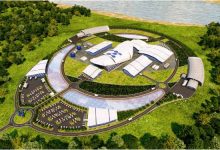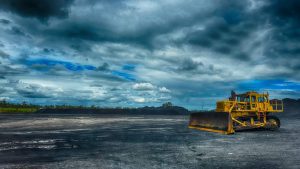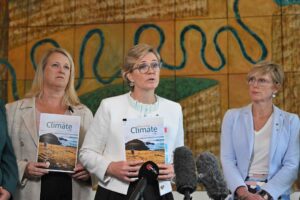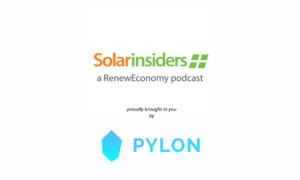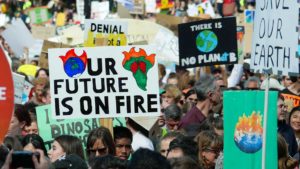The promotion of ‘small modular reactors’ (SMRs) in Australia has been disrupted by the Commonwealth Scientific and Industrial Research Organisation (CSIRO) and the Australian Energy Market Operator (AEMO).
The latest GenCost report produced by the two agencies estimates a hopelessly uneconomic construction cost of A$16,304 per kilowatt (kW) for SMRs. But it throws the nuclear lobby a bone by hypothesising a drastic reduction in costs over the next decade.
The A$16,304 estimate has been furiously attacked by, amongst others, conservative politicians involved in a federal nuclear inquiry last year, and the Bright New World (BNW) nuclear lobby group.
The estimate has its origins in a commissioned report written by engineering company GHD. GHD provides the estimate without clearly explaining its origins or basis. And the latest CSIRO/AEMO report does no better than to state that the origins of the estimate are “unclear”.
Thus nuclear lobbyists have leapt on that muddle-headedness and filled the void with their own lowball estimates of SMR costs.
Real-world data
Obviously, the starting point for any serious discussion about SMR costs would be the cost of operational SMRs – ignored by CSIRO/AEMO and by lobbyists such as BNW.
There is just one operational SMR, Russia’s floating plant. Its estimated cost is US$740 million for a 70 MW plant.
That equates to A$15,200 per kW – similar to the CSIRO/AEMO estimate of A$16,304 per kW.
Over the course of construction, the cost quadrupled and a 2016 OECD Nuclear Energy Agency report said that electricity produced by the Russian floating plant is expected to cost about US$200 (A$288) per megawatt-hour (MWh) with the high cost due to large staffing requirements, high fuel costs, and resources required to maintain the barge and coastal infrastructure.
Figures on costs of SMRs under construction should also be considered – they are far more useful than the estimates of vendors and lobbyists, which invariably prove to be highly optimistic.
The World Nuclear Association states that the cost of China’s high-temperature gas-cooled SMR (HTGR) is US$6,000 (A$8,600) per kW.
Costs are reported to have nearly doubled, with increases arising from higher material and component costs, increases in labour costs, and increased costs associated with project delays.
The CAREM SMR under construction in Argentina illustrates the gap between SMR rhetoric and reality.
In 2004, when the reactor was in the planning stage, Argentina’s Bariloche Atomic Center estimated an overnight cost of USS$1,000 per kW for an integrated 300-MW plant (while acknowledging that to achieve such a cost would be a “very difficult task”).
When construction began in 2014, the cost estimate was US$15,400 per kW (US$446 million / 29 MW). By April 2017, the cost estimate had increased US$21,900 (A$31,500) per kW (US$700 million / 32 MW).
To the best of my knowledge, no other figures on SMR construction costs are publicly available. So the figures are:
A$15,200 per kW for Russia’s light-water floating SMR
A$8,600 per kW for China’s HTGR
A$31,500 per kW for Argentina’s light-water SMR
The average of those figures is A$18,400 per kW, which is higher than the CSIRO/AEMO figure of A$16,304 per kW and double BNW’s estimate of A$9,132 per kW.
The CSIRO/AEMO report says that while there are SMRs under construction or nearing completion, “public cost data has not emerged from these early stage developments.” That simply isn’t true.
BNW’s imaginary reactor
BNW objects to CSIRO/AEMO basing their SMR cost estimate on a “hypothetical reactor”. But BNW does exactly the same, ignoring real-world cost estimates for SMRs under construction or in operation.
BNW starts with the estimate of US company NuScale Power, which hopes to build SMRs but hasn’t yet begun construction of a single prototype.
BNW adds a 50% ‘loading’ in recognition of past examples of nuclear reactor cost overruns.
Thus BNW’s estimate for SMR construction costs is A$9,132 per kW.
Two big problems: NuScale’s cost estimate is bollocks, and BNW’s proposed 50% loading doesn’t fit the recent pattern of nuclear costs increasing by far greater amounts.
NuScale’s construction cost estimate of US$4,200 per kW is implausible. It is far lower than Lazard’s latest estimate of US$6,900-12,200 per kW for large reactors and far lower than the lowest estimate (US$12,300 per kW) of the cost of the two Vogtle AP1000 reactors under construction in Georgia (the only reactors under construction in the US).
NuScale’s estimate (per kW) is just one-third of the cost of the Vogtle plant – despite the unavoidable diseconomies of scale with SMRs and despite the fact that independent assessmentsconclude that SMRs will be more expensive to build (per kW) than large reactors.
Further, modular factory-line production techniques were trialled with the twin AP1000 Westinghouse reactor project in South Carolina – a project that was abandoned in 2017 after the expenditure of at least US$9 billion, bankrupting Westinghouse.
Lazard estimates a levelised cost of US$118-192 per MWh for electricity from large nuclear plants. NuScale estimates a cost of US$65 per MWh for power from its first plant. Thus NuScale claims that its electricity will be 2-3 times cheaper than that from large nuclear plants, which is implausible.
And even if NuScale achieved its cost estimate, it would still be higher than Lazard’s figures for wind power (US$28-54) and utility-scale solar (US$32-44).
BNW claims that the CSIRO/AEMO levelised cost estimate of A$258-338 per MWh for SMRs is an “extreme overestimate”.
But an analysis by WSP / Parsons Brinckerhoff, prepared for the SA Nuclear Fuel Cycle Royal Commission, estimated a cost of A$225 per MWh for a reactor based on the NuScale design, which is far closer to the CSIRO/AEMO estimate than it is to BNW’s estimate of A$123-128 per MWh with the potential to fall as low as A$60.
Cost overruns
BNW proposes adding a 50% ‘loading’ to NuScale’s cost estimate in recognition of past examples of reactor cost overruns, and claims that it is basing its calculations on “a first-of-a-kind vendor estimate [NuScale’s] with the maximum uncertainly associated with the Class of the estimate.” Huh?
The general pattern is that early vendor estimates underestimate true costs by an order of magnitude, while estimates around the time of initial construction underestimate true costs by a factor of 2-4.
Here are some recent examples of vastly greater cost increases than BNW allows for:
* The estimated cost of the HTGR under construction in China has nearly doubled.
* The cost of Russia’s floating SMR quadrupled.
* The estimated cost of Argentina’s SMR has increased 22-fold above early, speculative estimates and the cost increased by 66% from 2014, when construction began, to 2017.
* The cost estimate for the Vogtle project in US state of Georgia (two AP1000 reactors) has doubled to more than US$13.5 billion per reactor and will increase further. In 2006, Westinghouse said it could build an AP1000 reactor for as little as US1.4 billion – 10 times lower than the current estimate for Vogtle.
* The estimated combined cost of the two EPR reactors under construction in the UK, including finance costs, is £26.7 billion (the EU’s 2014 estimate of £24.5 billion plus a £2.2 billion increase announced in July 2017). In the mid-2000s, the estimated construction cost for one EPR reactor in the UK was £2 billion, almost seven times lower than the current estimate.
* The estimated cost of about €12.4 billion for the only reactor under construction in France is 3.8 times greater than the original €3.3 billion estimate.
* The estimated cost of about €11 billion for the only reactor under construction in Finland is 3.7 times greater than the original €3 billion estimate.
Timelines
BNW notes that timelines for deployment and construction are “extremely material” in terms of the application of learning rates to capital expenditure.
BNW objected to the previous CSIRO/AEMO estimate of five years for construction of an SMR and proposed a “more probable” three-year estimate as well as an assumption that NuScale’s first reactor will begin generating power in 2026 even though construction has not yet begun.
For reasons unexplained, CSIRO/AEMO also assume a three-year construction period in their latest report, and for reasons unexplained the operating life of an SMR is halved from 60 years to 30 years.
None of the real-world evidence supports the arguments about construction timelines:
* The construction period for the only operational SMR, Russia’s floating plant, was 12.5 years.
* Argentina’s CAREM SMR was conceived in the 1980s, construction began in 2014, the 2017 start-up date was missed and subsequent start-up dates were missed.
If the current schedule for a 2023 start-up is met it will be a nine-year construction project rather than the three years proposed by CSIRO/AEMO and BNW for construction of an SMR.
Last year, work on the CAREM SMR was suspended, with Techint Engineering & Construction asking Argentina’s National Atomic Energy Commission to take urgent measures to mitigate the project’s serious financial breakdown. In April 2020, Argentina’s energy minister announced that work on CAREM would resume.
* Construction of China’s HTGR SMR began in 2012, the 2017 start-up date was missed, and if the targeted late-2020 start-up is met it will be an eight-year construction project.
* NuScale Power has been trying to progress its SMR ambitions for over a decade and hasn’t yet begun construction of a single prototype reactor.
* The two large reactors under construction in the US are 5.5 years behind schedule and those under construction in France and Finland are 10 years behind schedule.
* In 2007, EDF boasted that Britons would be using electricity from an EPR reactor at Hinkley Point to cook their Christmas turkeys in December 2017 – but construction didn’t even begin until December 2018.
Learning rates
In response to relentless attacks from far-right politicians and lobby groups such as BNW, the latest CSIRO/AEMO GenCost report makes the heroic assumption that SMR costs will fall from A$16,304 per kW to as little as A$7,140 per kW in 2030, with the levelised cost anywhere between A$129 and A$336 per MWh.
The report states that SMRs were assigned a “higher learning rate (more consistent with an emerging technology) rather than being included in a broad nuclear category, with a low learning rate consistent with more mature large scale nuclear.”
But there’s no empirical basis, nor any logical basis, for the learning rate assumed in the report. The cost reduction assumes that large numbers of SMRs will be built, and that costs will come down as efficiencies are found, production capacity is scaled up, etc.
Large numbers of SMRs being built? Not according to expert opinion. A 2017 Lloyd’s Register report was based on the insights of almost 600 professionals and experts from utilities, distributors, operators and equipment manufacturers, who predicted that SMRs have a “low likelihood of eventual take-up, and will have a minimal impact when they do arrive”.
A 2014 report produced by Nuclear Energy Insider, drawing on interviews with more than 50 “leading specialists and decision makers”, noted a “pervasive sense of pessimism” about the future of SMRs.
Last year, the North American Project Director for Nuclear Energy Insider said that there “is unprecedented growth in companies proposing design alternatives for the future of nuclear, but precious little progress in terms of market-ready solutions.”
Will costs come down in the unlikely event that SMRs are built in significant numbers? For large nuclear reactors, the experience has been either a very slow learning rate with modest cost decreases, or a negative learning rate.
If everything went astonishingly well for SMRs, it would take several rounds of learning to drastically cut costs to A$7,140 per kW. Several rounds of SMR construction by 2030, as assumed in the most optimistic scenario in the CSIRO/AEMO report?
Obviously not. The report notes that it would take many years to achieve economies, but then ignores its own advice:
“Constructing first-of-a-kind plant includes additional unforeseen costs associated with lack of experience in completing such projects on budget. SMR will not only be subject to first-of-a-kind costs in Australia but also the general engineering principle that building plant smaller leads to higher costs. SMRs may be able to overcome the scale problem by keeping the design of reactors constant and producing them in a series. This potential to modularise the technology is likely another source of lower cost estimates. However, even in the scenario where the industry reaches a scale where small modular reactors can be produced in series, this will take many years to achieve and therefore is not relevant to estimates of current costs (using our definition).”
Even with heroic assumptions resulting in CSIRO/AEMO’s low-cost estimate of A$129 per MWh for SMRs in 2030, the cost is still far higher than the low-cost estimates for wind with two hours of battery storage (A$64), wind with six hours of pumped hydro storage (A$86), solar PV with two hours of battery storage (A$52) or solar PV with six hours of pumped hydro storage (A$84).
And the CSIRO/AEMO high-cost estimate for SMRs in 2030 ($336 per MWh) is more than double the high estimates for solar PV or wind with 2-6 hours of storage (A$90-151).
Reality bats last
The economic claims of SMR enthusiasts are sharply contradicted by real-world data.
And their propaganda campaign simply isn’t working – government funding and private-sector funding is pitiful when measured against the investments required to build SMR prototypes let alone fleets of SMRs and the infrastructure that would allow for mass production of SMR components.
Wherever you look, there’s nothing to justify the hype of SMR enthusiasts.
Argentina’s stalled SMR program is a joke. Plans for 18 additional HTGRs at the same site as the demonstration plant in China have been “dropped” according to the World Nuclear Association.
Russia planned to have seven floating nuclear power plants by 2015, but only recently began operation of its first plant. South Korea won’t build any of its domestically-designed SMART SMRs in South Korea – “this is not practical or economic” according to the World Nuclear Association – and plans to establish an export market for SMART SMRs depend on a wing and a prayer … and on Saudi oil money which is currently in short supply.
‘Reality bats last’, nuclear advocate Barry Brook used to say a decade ago when a nuclear ‘renaissance’ was in full-swing.
The reality is that the renaissance was short-lived, and global nuclear capacity fell by 0.6 gigawatts last year while renewable capacity increased by a record 201 gigawatts.
Dr. Jim Green is the national nuclear campaigner with Friends of the Earth Australia and editor of the Nuclear Monitor newsletter.

